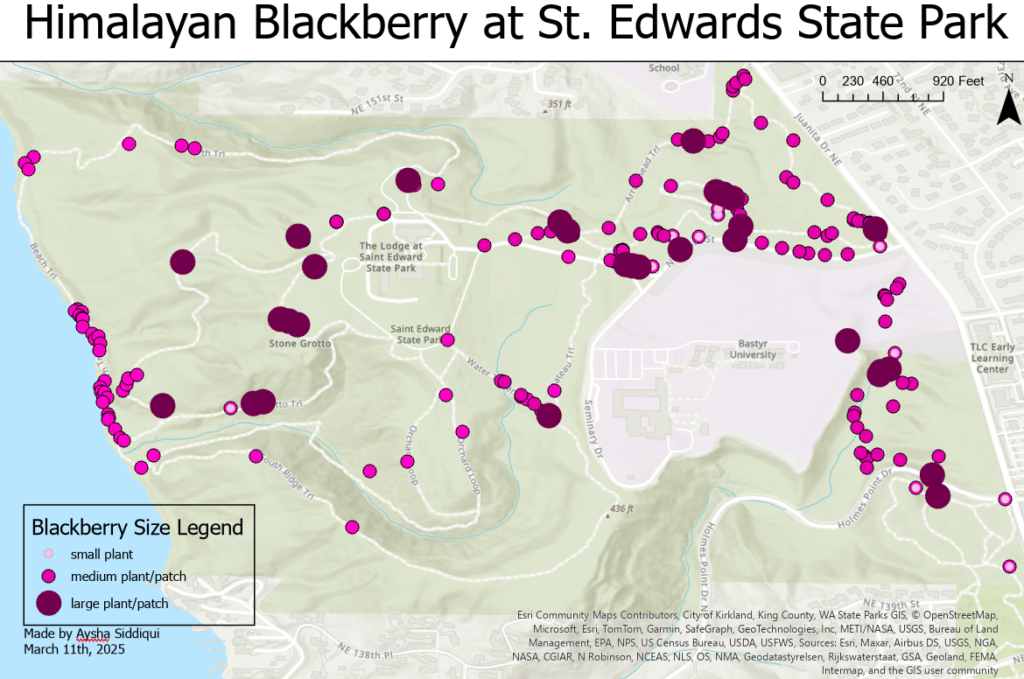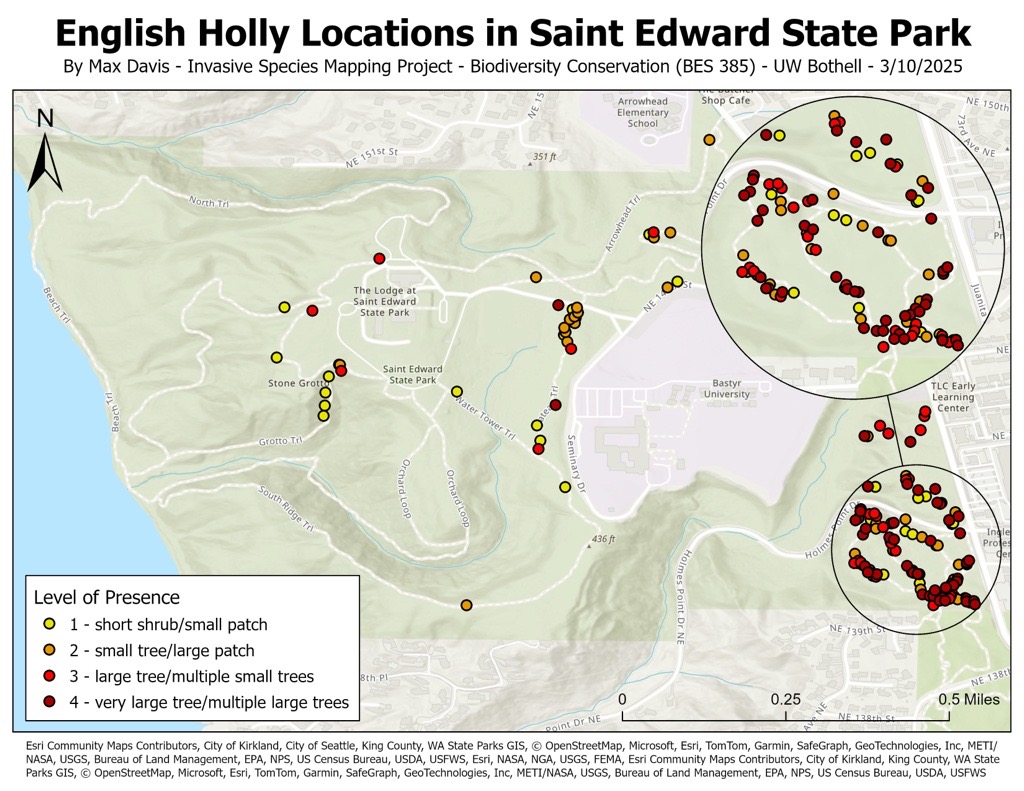Invasive research in the park
Modeling the invasion of holly: Spatial relationships and spread trajectories
Overview
Dr. Santiago Lopez and Dr. David L. Stokes, two members of CoSEE conducted an in-depth study on the invasion of English holly (Ilex aquifolium) in Saint Edward State Park. Their research, published in The Professional Geographer, explores the spatial relationships and spread trajectories of this invasive species.
By analyzing data collected between 2011 and 2014, the study highlights how environmental factors, such as proximity to evergreen forests, forest edges, streams, and topography, affect holly’s establishment. Using geospatial modeling and field data, they mapped out holly’s current spread and predicted future invasion patterns.
Why study invasive species in this place?
Invasive species like English holly pose a significant threat to native ecosystems. They compete with native plants, alter nutrient cycles, and can lead to biodiversity loss. By understanding how invasive species spread, researchers can develop better management strategies to protect parks and natural areas.
Key findings from their study:
- Holly spreads more easily near forest edges and evergreen trees
- Birds help disperse holly seeds, contributing to its rapid expansion
- The plant prefers south-facing slopes and areas farther from stream
- Without intervention, holly populations could expand exponentially over the next few decades
Continuing the work: Student-led GIS research
Building on the research of Dr. Lopez and Dr. Stokes, a team of five student interns is currently collecting GIS data in Saint Edward State Park. This project was led by Janelle Adsuara and supported by Max Davis, Francisco Jimenez, and Aysha Siddiqui have been using GIS data to map the invasive species in the park.
Their work focuses on:
- Mapping the current locations of Himalayan Blackberry, English Holly, and English Ivy
- Using geospatial technology to identify the current spread & level of presence in the area
- Help CoSEE developing long-term conservation strategies



